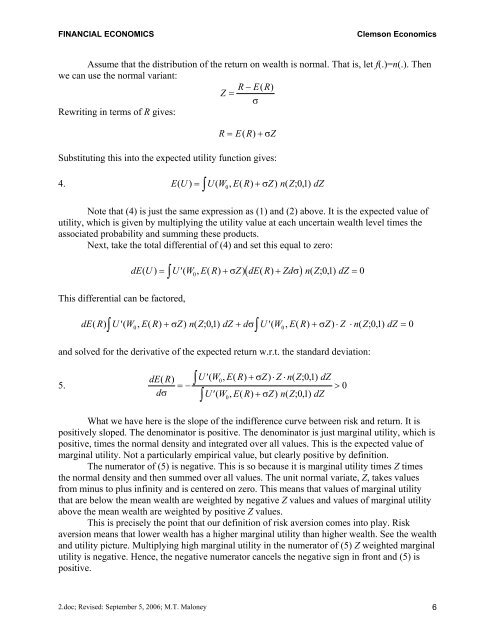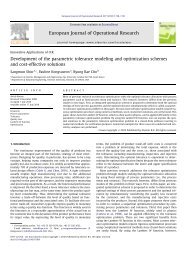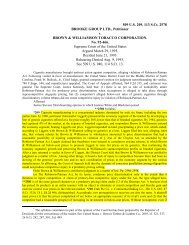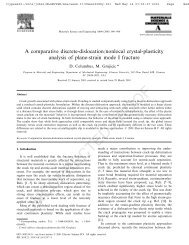Fisher Separation Theorem & Consumer Optimization 1. TWO ...
Fisher Separation Theorem & Consumer Optimization 1. TWO ...
Fisher Separation Theorem & Consumer Optimization 1. TWO ...
Create successful ePaper yourself
Turn your PDF publications into a flip-book with our unique Google optimized e-Paper software.
FINANCIAL ECONOMICS Clemson Economics<br />
Assume that the distribution of the return on wealth is normal. That is, let f(.)=n(.). Then<br />
we can use the normal variant:<br />
R− E( R)<br />
Z =<br />
σ<br />
Rewriting in terms of R gives:<br />
R = E( R) + σ Z<br />
Substituting this into the expected utility function gives:<br />
z = 0 +<br />
4. EU ( ) UW ( , E( R) σ Z) nZ ( ; 01 , ) dZ<br />
Note that (4) is just the same expression as (1) and (2) above. It is the expected value of<br />
utility, which is given by multiplying the utility value at each uncertain wealth level times the<br />
associated probability and summing these products.<br />
Next, take the total differential of (4) and set this equal to zero:<br />
z = ′ 0 + +<br />
b g<br />
dE( U ) U ( W , E( R) σZ) dE( R) Zdσ n( Z; 01 , ) dZ = 0<br />
This differential can be factored,<br />
z z<br />
dE( R) U ′ ( W0, E( R) + σZ) n( Z; 01 , ) dZ + dσ U ′ ( W0, E( R) + σZ)<br />
⋅Z⋅ n( Z; 01 , ) dZ = 0<br />
and solved for the derivative of the expected return w.r.t. the standard deviation:<br />
5.<br />
z z<br />
dE( R)<br />
U′ ( W0, E( R) + σZ)<br />
⋅Z⋅n( Z; 01 , ) dZ<br />
=−<br />
> 0<br />
dσ<br />
U′ ( W , E( R) + σZ)<br />
n( Z; 01 , ) dZ<br />
0<br />
What we have here is the slope of the indifference curve between risk and return. It is<br />
positively sloped. The denominator is positive. The denominator is just marginal utility, which is<br />
positive, times the normal density and integrated over all values. This is the expected value of<br />
marginal utility. Not a particularly empirical value, but clearly positive by definition.<br />
The numerator of (5) is negative. This is so because it is marginal utility times Z times<br />
the normal density and then summed over all values. The unit normal variate, Z, takes values<br />
from minus to plus infinity and is centered on zero. This means that values of marginal utility<br />
that are below the mean wealth are weighted by negative Z values and values of marginal utility<br />
above the mean wealth are weighted by positive Z values.<br />
This is precisely the point that our definition of risk aversion comes into play. Risk<br />
aversion means that lower wealth has a higher marginal utility than higher wealth. See the wealth<br />
and utility picture. Multiplying high marginal utility in the numerator of (5) Z weighted marginal<br />
utility is negative. Hence, the negative numerator cancels the negative sign in front and (5) is<br />
positive.<br />
2.doc; Revised: September 5, 2006; M.T. Maloney 6
















